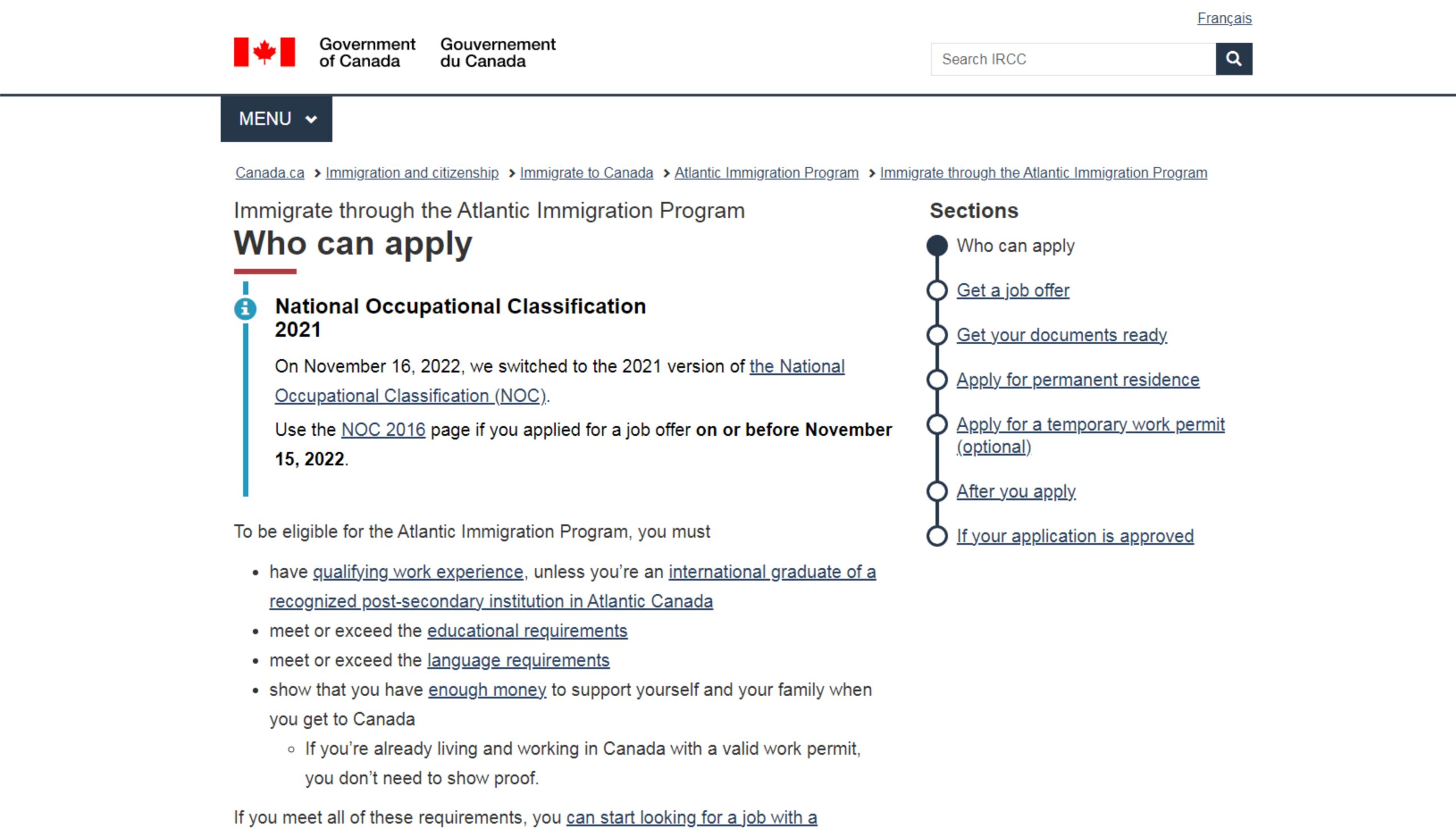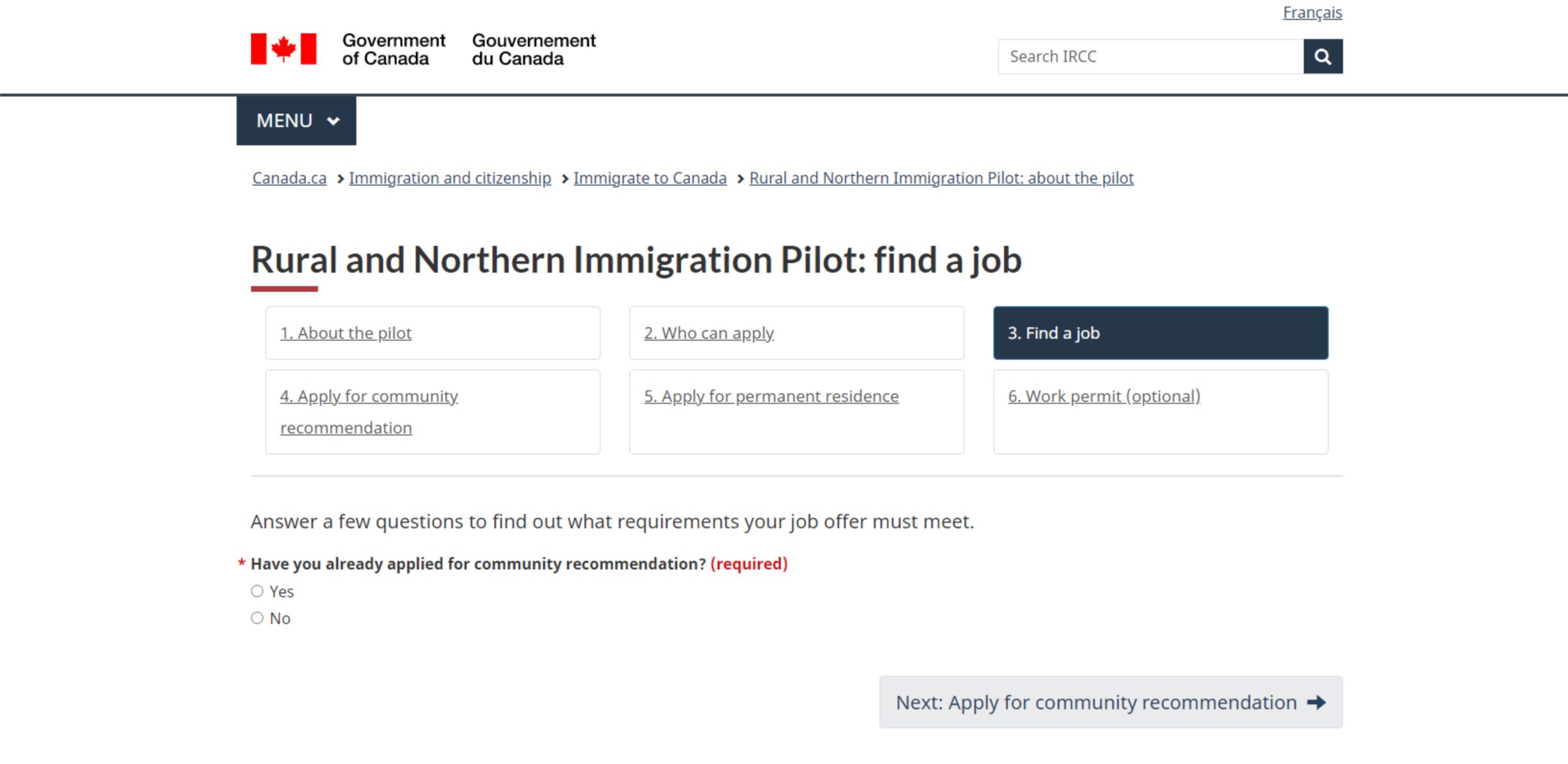Atlantic Immigration Pilot Vs Rural and Northern Immigration Pilot
Have you been dreaming of a new life in Canada but not sure of the path to take? Let’s talk about two exciting options: the Atlantic Immigration Pilot (AIP) and the Rural and Northern Immigration Pilot (RNIP).
These programs are like golden tickets to specific parts of Canada, each with its own unique process. The AIP is your gateway to the stunning coastal provinces on the east coast, while the RNIP opens doors to charming small towns and northern communities across the country.
These programs aim to attract newcomers to specific areas of Canada that need more people, but they work a bit differently. Wondering which one might be right for you? Don’t worry, we’re going to break it all down. By the time we’re done, you’ll have a clear picture of how these programs compared each other.
So, relax, and let’s look into the world of Canadian immigration pilots. We’ll look into where you could end up, what you need to qualify, and how to make your Canadian dream a reality.
Atlantic Immigration Pilot (AIP)

The Atlantic Immigration Pilot is a special program designed to attract skilled workers to Canada’s Atlantic provinces. Launched in 2017, it’s a partnership between the federal government and the four Atlantic provinces to address labor shortages and boost economic growth in the region.
Think of it as a fast-track system for immigrants who want to settle in Canada’s beautiful east coast. We’re talking about a region known for its stunning coastlines, rich maritime history, and yes – delicious seafood! But it’s not just about lobster and lighthouses. These provinces offer a unique blend of urban amenities and small-town charm, with a quality of life that’s hard to beat.
Read: What Not to Say During a Canada Work Permit Interview (Top 6 Blunders)
Participating provinces
You’ve got four options, each with its own distinct character:
1. New Brunswick: Bilingual province with notable cities and natural attractions.
2. Newfoundland and Labrador: Known for friendly people, scenic landscapes, and a vibrant capital.
3. Nova Scotia: Features a major port city, coastal villages, and a growing technology industry.
4. Prince Edward Island: Small province celebrated for its beaches, agriculture, and relaxed lifestyle.
Each province is described with its key characteristics, attractions, and cultural highlights.
Eligibility criteria
To be eligible for the AIP, you’ll need to meet these requirements:
Job offer: You must have a full-time, non-seasonal job offer from a designated employer in one of the Atlantic provinces.
Work experience: At least one year of full-time (or equivalent part-time) work experience in the past three years.
Language skills: You’ll need to prove your proficiency in either English or French. The program uses standardized tests like IELTS or CELPIP for English, and TEF for French.
Education: A minimum of a high school diploma. If you studied outside Canada, you’ll need an Educational Credential Assessment (ECA) to show your education is equivalent to Canadian standards.
Proof of funds: You’ll need to show you have enough money to support yourself and your family as you settle in Canada.
Health and security checks: Like all immigration programs, you’ll need to pass medical exams and security screenings.
Application process
The application process for Atlantic Immigration Pilot are listed below:
Find a job: Look for opportunities with designated employers in the Atlantic provinces. They’re actively seeking talented individuals like you!
Get a provincial endorsement: Once you have a job offer, your province will assess your application. If approved, they’ll issue an endorsement.
Apply for permanent residence: With your endorsement, you can then apply to the federal government for permanent residence.
Your employer and the provincial government will provide support throughout this process. They want you to succeed!
Benefits
For immigrants:
- Faster processing times compared to many other immigration programs
- Support from both employers and provincial governments.
- Opportunity to live in beautiful, welcoming communities.
- Potential for lower cost of living compared to larger Canadian cities.
- Rich cultural experiences and high quality of life.
For employers:
- Access to a global talent pool to fill crucial positions.
- Support in the hiring and retention of skilled workers.
- Opportunity to contribute to the growth and diversity of their communities.
The AIP is more than just an immigration program – it’s an invitation to become part of the vibrant tapestry of Atlantic Canada. Whether you’re drawn to the maritime lifestyle, seeking career growth, or looking for a place to put down roots, the AIP could be your gateway to a new life in one of Canada’s most charming regions.
Read: 7 Mistakes to Avoid During Your Canada Work Permit Interview
Rural and Northern Immigration Pilot (RNIP)
 The Rural and Northern Immigration Pilot (RNIP) is a Canadian immigration program designed to attract newcomers to smaller, less populated areas of Canada. It aims to spread the benefits of economic immigration to rural and northern communities by creating a path for foreign workers to become permanent residents in these areas.
The Rural and Northern Immigration Pilot (RNIP) is a Canadian immigration program designed to attract newcomers to smaller, less populated areas of Canada. It aims to spread the benefits of economic immigration to rural and northern communities by creating a path for foreign workers to become permanent residents in these areas.
The RNIP addresses the unique economic and demographic challenges faced by smaller communities in Canada. It helps these areas attract and retain skilled workers, support economic growth, and increase population diversity.
Participating Communities
The program operates in selected communities across five provinces:
1. Ontario: North Bay, Sudbury, Timmins, Sault Ste. Marie, and Thunder Bay
2. Manitoba: Brandon and Altona/Rhineland
3. Saskatchewan: Moose Jaw
4. Alberta: Claresholm
5. British Columbia: Vernon and West Kootenay
Each of these communities offers unique lifestyle opportunities. For example, North Bay in Ontario is known for its beautiful lakeside setting, while Brandon in Manitoba offers the charm of prairie life.
Eligibility Criteria
Let’s discuss the eligibility criteria for the Rural and Northern Immigration Pilot (RNIP) in more detail:
Valid Job Offer: You must have a genuine, non-seasonal, full-time job offer that meet local wage standard from an employer in one of the participating RNIP communities.
Relevant Work Experience: You need at least one year of full-time work experience (or an equivalent amount in part-time) in the occupation related to your job offer.
Language Proficiency: You must prove your ability in either English or French by taking an approved language test. The minimum required score is typically Canadian Language Benchmark (CLB) 4, but some communities may require higher scores.
Education: You need a Canadian high school diploma or equivalent foreign credential at least, while some jobs or communities may require higher levels of education.
Health and Security Standards: You must undergo a medical examination and pass security and criminal background checks to ensure you meet Canadian health standards.
Application Process
Let’s disucss the application process for successful Rural and Northern Immigration Pilot below:
Secure a Job Offer: You’ll research for job opportunities in RNIP communities, apply for positions and go through the hiring process with potential employers.
Apply for Community Recommendation: After securing the job offer, submit a detailed application to their chosen RNIP community, including job offer details, qualifications, and a settlement plan. The community evaluates the application based on local needs. If approved, you’ll receives a recommendation, which is essential for proceeding with the permanent residence application.
Apply for Permanent Residence: Once you receive a community recommendation, you’ll need to submit a comprehensive permanent residence application to IRCC, which reviews it for federal eligibility.
Benefits
For Immigrants:
- Opportunity to live in smaller, often more affordable communities.
- Potential for a different lifestyle with shorter commutes and closer community ties.
- Chance to make a significant impact in a smaller town.
For Communities:
- Attraction of skilled workers to address labor shortages.
- Introduction of new perspectives and skills to the local economy.
- Support for population growth and community development.
By participating in the RNIP, you’ll have the chance to become integral parts of smaller Canadian communities, potentially enjoying a different pace of life and more affordable living conditions compared to larger cities. At the same time, these communities benefit from the influx of new residents, skills, and cultural diversity.
Read: The 10 Biggest Mistakes People Make When Applying for a Canada Visa
Atlantic Immigration Pilot Vs Rural and Northern Immigration Pilot
 You might be wondering what makes a difference between Atlantic Immigration Pilot and the Rural and Nothern Immigration Pilot. Let’s break down how AIP and RNIP stack up against each other:
You might be wondering what makes a difference between Atlantic Immigration Pilot and the Rural and Nothern Immigration Pilot. Let’s break down how AIP and RNIP stack up against each other:
Location: AIP is all about the Atlantic provinces – think seaside views and maritime charm. RNIP, on the other hand, spreads across small towns and northern areas in other parts of Canada.
Job Offer: Both programs want you to secure a job opportunity. It’s their way of making sure you’re heading somewhere your skills are needed.
Community Involvement: Here’s where RNIP throws in a twist. They ask for a community recommendation. It’s like the town giving you a thumbs up. AIP doesn’t need this extra step.
Language Skills: Whether you’re eyeing AIP or RNIP, you’ll need to show you can chat in either English or French. They’re not expecting Shakespeare, but you should be able to get by in daily life and at work.
Work Experience: AIP usually wants you to have a year of experience. RNIP can be a bit more flexible, depending on the job you’re going for.
Education: Both programs generally want you to have at least finished high school. Some jobs might ask for more, but it varies.
Application Process: With AIP, you’re mainly dealing with your employer. RNIP adds that extra community step we talked about.
Path to Permanent Residency: Good news! Both programs are designed to help you establish a long-term life in Canada. They’re not just about temporary work – they want you to stick around.
So, while these programs have a lot in common, it’s these little differences that might sway you one way or the other. Think about what matters most to you – the location, the community vibe, or maybe the application process. There’s no wrong choice here, just the right one for you.
Similarities
Address regional labor shortages: Both programs aim to bring skilled workers to areas in Canada facing workforce gaps.
Require job offers: You must have a valid job offer from an employer in the designated regions, ensuring your skills are in demand.
Path to permanent residency: These programs offer a clear route for you to settle long-term in Canada, not just temporary work.
Factors to Consider When Choosing Between AIP and RNIP
Here are some important factors you need to consider when choosing Between AIP and RNIP.
- Location: Coastal (AIP) vs. inland/northern (RNIP) areas.
- Job opportunities: Match your skills with available positions in each region.
- Cost of living: Generally lower in RNIP areas.
- Climate: Milder summers but tougher winters in AIP regions; varied in RNIP areas.
- Cultural fit: Maritime culture (AIP) vs. small-town vibes (RNIP)
Evaluate these factors to determine which program aligns best with your preferences, career goals, and lifestyle for your Canadian immigration journey.
Application Tips and Common Mistakes to Avoid
Let’s discuss some tips you need to apply and some common mistakes that should be avoided for AIP and RNIP programs:
Application Tips:
- Start early: Start collecting your documents in advance.
- Contact employers directly: Show initiative and tailor your approach.
- Be honest about skills: Accurately represent your qualifications.
- Improve language skills: Focus on English or French proficiency.
- Research the community: Demonstrate commitment to settling there
Common Mistakes to Avoid:
- Applying without a valid job offer.
- Underestimating language requirements.
- Neglecting to assess foreign education credentials.
- Missing application deadlines or using expired documents
Following these guidelines can strengthen your application and increase your chances of success in these immigration programs.



10 comments
please sir give me job
I’m going to work Canada and to leave I’m looking visa I have Internatinal passport from Ethiopia
my name is Imran Khan
I m electrical working in saudi Arabia
I need Electrical work Visa for Canada
I don’t want to live in Afghanistan
My favorite country is Canada
I want to live in Canada
I am live in Oman I have experience in electrician
I want to go to Canada im interested in
your service
I need heavy driving
heavy driving
good
I need have driving
I apply for Visa sponsorship Jobs in Canada and marriage sponsorship Visa to Canada and I will be grateful if my application is considered.